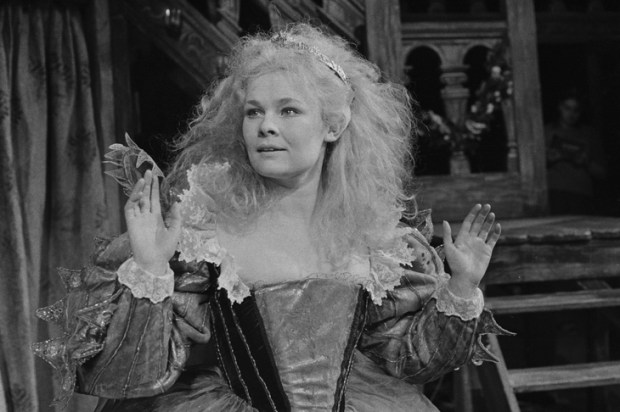So they’re having another go at removing the varnish and the accumulated dark oiliness and other accretions from that most spectacular of Rembrandt paintings, The Night Watch, and it will be interesting to see how much light and how much darkness is left when they have reached an optimal restoration.
The historian Simon Schama, with his impassioned love of art, wrote a massive, upwards of 700 pages, study Rembrandt’s Eyes in which he says of The Night Watch, ‘It was the most immodest thing Rembrandt ever did, not in self-advertisement but in terms of what he thought he could achieve in a single work. It is the acme of Baroque painting because it does so much, because it is so much.’
This is criticism of very deliberate intensity as Schama attempts to work out the degree of risk and the degree of achievement in this most spectacular of Rembrandt’s paintings. Anyone who talked to Simon Schama back when he was in Melbourne to see the painting attributed to Rembrandt – a great painting, they reckon, but the work of a masterly disciple not the master – would have been aware of the painstaking intensity with which he looked at every side of a question.
It was therefore amusing to see him confronted by the review of his previous book Citizens, the one about the French revolution, by that poet who was also a wizard of a critic, John Forbes. John had read the book in what was virtually a concentrated sitting for a review to be published on the day of the 300th anniversary and he described Robespierre and his followers as ‘the Khmer Rouge in cravats’.
Simon Schama was ropeable when he heard that criticism. ‘I did everything in my power to stop people distorting things in that way,’ he fumed.
But he couldn’t win because John had – in a way his poetry exploits and transcends – the gift of a born phrase-maker. His caricature of the French revolutionaries is unfair in the same way as his rejoinder to Les Murray: ‘The trouble with vernacular republics is that they presuppose the kingdom of correct usage is elsewhere.’
The half-truth shines and lives forever. It will be interesting to see how the different aspects of John Forbes glow and darken in the forthcoming biography by Aidan Coleman.
No doubt there are people around who in the manner of John Forbes are capable of reading a massive historical tome like Simon Schama’s Citizens in a weekend and are no doubt aided by the vividness with which Schama indicates his sense of the ruthlessness and horror of what Robespierre and his allies did.
There’s that touching story Schama tells – in his A History of Britain which in truncated vivid form was televised – of how his Jewish Cockney father used to point out the sign on some London embankment which indicated the one time sway of the blackshirts and the Mosleyites in the fascist 1930s. ‘Don’t let anyone say a word against Winston Churchill, my boy,’ Schama père said. ‘He was the only thing that stood between us and Hitler.’
It’s strange to think back on one of the most disconcerting of Saki’s stories. Saki the eternal yarn-spinner who invented Tobermory, the talking cat who tells everyone the scurrilous details of everyone else’s secret scandalous lives.
Well, he has a short story The Unrest-Cure where an anarchic young man claiming the highest authority appears and says the edict from on high – is it via the Archbishop of Canterbury? – makes it clear they must round up all the Jews.
The story has a horrific edge to it now but the context for its composition is that the barbarity proposed as a black joke was a laughable impossibility when it was published in the wake of the first world war, during which, in 1916, Saki died.
Simon Schama has a fine sense of the aesthetic of history. He says somewhere that he likes to think of Zhou EnLai – the supreme master of diplomacy in Mao’s China – discoursing in heaven with Talleyrand who went from a bishopric to serving as Napoleon’s foreign minister to negotiating for France at the Congress of Vienna.
Napoleon described Talleyrand as s–t in a silk stocking but no one will ever forget the supreme survivor – call him a turncoat if you must – saying, ‘No one who did not experience the Ancien Regime can realise how sweet life was.’
When Pierre Ryckmans – as Simon Leys – singled out Zhou Enlai for his charm in Chinese Shadows he didn’t for a moment think this was an excuse for the tyranny he served. Mao Zedong blackmailed Zhou Enlai via his daughter.
The man who freed Francis James, that eccentric editor of the Anglican who actually took photos of nuclear weapons, was not on the side of the good guys however much you might admire his negotiations with Kennedy at the time of the Cuban missile crisis.
By the way, one of the greatest novellas ever written in this country is Simon Leys’ (i.e. Pierre Ryckman’s) The Death of Napoleon. It’s about a madman who thinks he’s Napoleon. And, besides, he is Napoleon.
Tolstoy who has rather strong claims to be the greatest of all novelists took a dim view of Napoleon and his supposed genius and this runs through War and Peace not wholly convincingly. He was a bit like Christopher Hitchens who took a dim view of Che Guevara, Bill Clinton and Mother Teresa.
It was Pierre Ryckmans who defended the saintly nun against Hitchens. Remember how he offered to put the negative case to the Vatican’s devil’s advocate?
And why shouldn’t we revere the great naysayers. Everyone remembers Lord Acton saying, ‘All power corrupts but absolute power corrupts absolutely.’ You don’t nearly so often hear his other great one liner, ‘A great man is usually a bad man.’
And can this be remotely true? Perhaps it’s simply the case that when we speak of political and worldly greatness we’re talking of qualities that are not easily tallied with moral sanctity or not simply. Still, Tolstoy exemplified the greatness he failed to discern in the higher flights of others.
Think of the way he presents Anna Karenina in her last journey through a technique that anticipates Joyce’s stream of consciousness. The old adage that literature derives from the depth of life it springs from still carries conviction.
Got something to add? Join the discussion and comment below.
You might disagree with half of it, but you’ll enjoy reading all of it. Try your first month for free, then just $2 a week for the remainder of your first year.













